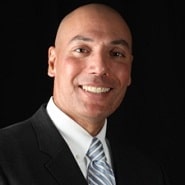
Albert Villarin, MD, CMIO & Associate CIO, Staten Island University Hospital
The Internet of Things (IoT) is influencing the way we live, work, and play across all sectors — but perhaps no place more meaningfully than in healthcare.
From vast hospital complexes to private practices, strategic use of connected care technology is enabling clinicians to deliver better patient care. By combining evidence-based knowledge and real-time clinical data, doctors and nurses can deliver more proactive and dynamic treatment. Beyond the clinical realm, the IoT is driving facility and equipment performance improvements.
Such benefits are motivating healthcare leaders to invest in IoT solutions now. Already, roughly 60 percent of healthcare executives worldwide say they have adopted IoT technology, according to an Aruba study. The momentum is so great, in fact, that the healthcare sector is the third most advanced industry in terms of IoT implementation.
The clear case for a connected care ecosystem
Meet the very satisfied Patient Jones. Her admission is fast and easy thanks to more detailed historical electronic medical records. New information gathered about her during the intake process is instantly accessible to clinicians — as is historical data that provides invaluable context. During treatment, sensors trigger alerts to the mobile devices of her doctors and nurses, who quickly respond to important changes in her condition.
Upon discharge, Patient Jones returns home with her medication, an infusion pump, and a list of symptoms to watch for that could affect recovery. Using wearable sensors and easy-to-use mobile apps monitoring vital signs and medication compliances, she shares data points with her care team’s software systems without even thinking about it. When she misses a medication dose or shows worsening symptoms, the connected software automatically alerts her caregivers to adjust her care.
Our fictional Patient Jones’ experience helps illustrate some of the main benefits any healthcare provider can expect with a successful IoT program:
- Real-time data aggregation gives all relevant parties the information they need, when they need it. For example, an EKG order can be automatically added to the EMR, providing instant access to past EKG results. Caregivers can quickly analyze aggregated data to identify patterns in patient outcomes and choose the most effective treatments.
- Continuous monitoring of a patient’s condition with sensor arrays and biometric devices connected to clinical systems that create notifications for early detection and medical intervention—in the hospital and at home. Meanwhile, connected devices like infusion pumps can be updated automatically through wireless networks, rather than manually updated by clinicians across a large hospital.
- Better-managed facilities and equipment with connected maintenance systems. Case in point: a refrigerator or lab in which blood is stored must be maintained according to rigid environmental standards. Connected sensors can alert technicians to temperature variations or malfunctions.
It all adds up to better, more innovative care together with cost savings.
A solid plan is a must-have
The IoT is not, however, a simple solution. Key to unlocking its full potential is careful and strategic planning. After all, we’re talking about millions of devices, extremely sensitive patient information, and more data than ever. It’s vital for healthcare leaders to take a thoughtful approach to IoT planning and implementation, such as by aggregating all that data onto a cloud-based service, and developing strategic roadmaps for technology investments that support the entire continuum of care.
This piece is the first of a blog series written by Albert Villarin, MD, who serves as CMIO of Staten Island University Hospital (part of Northwell Health), and CMIO at Burwood Group. The next segments will focus on how to keep data safe, how to make it interoperable, and how to facilitate adoption. To view the original piece, click here. To follow Burwood Group on Twitter, click here.


Share Your Thoughts
You must be logged in to post a comment.